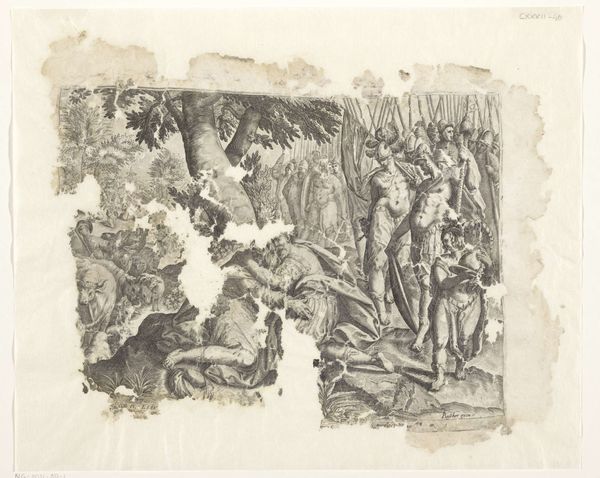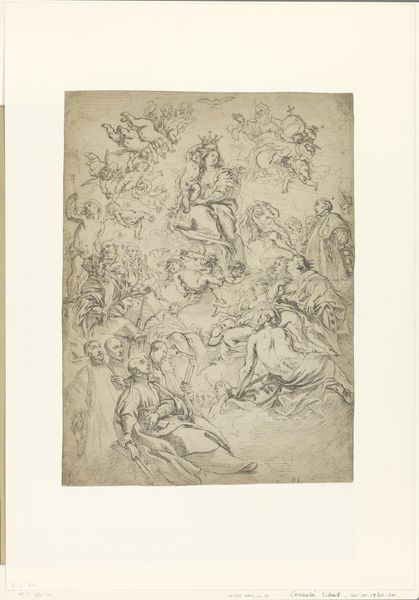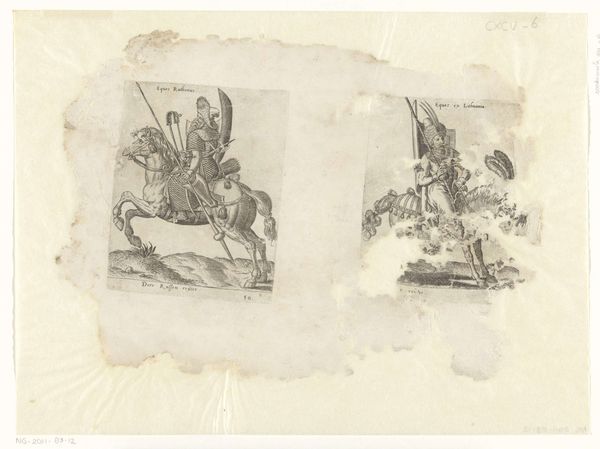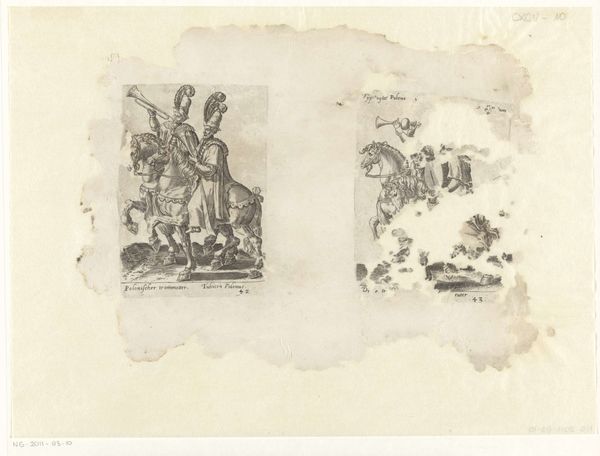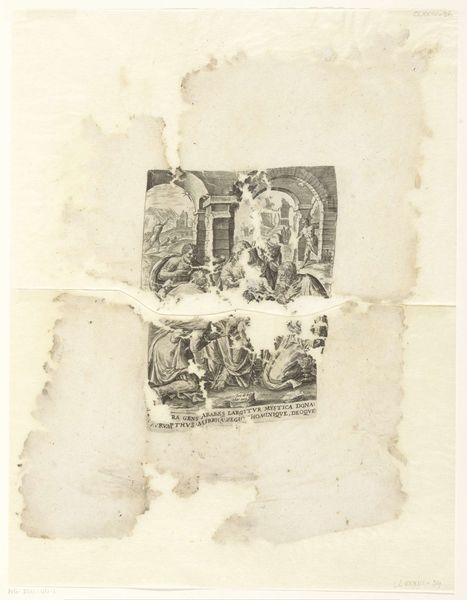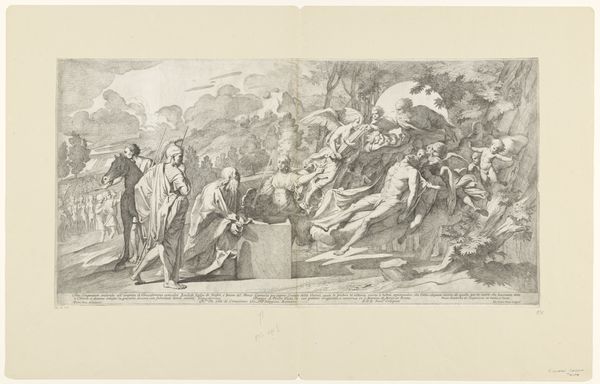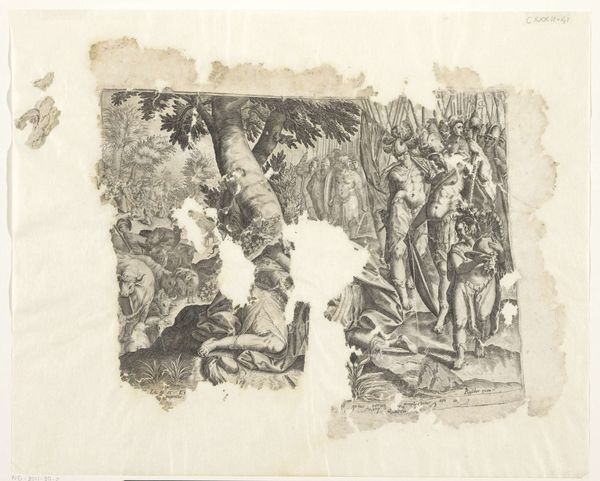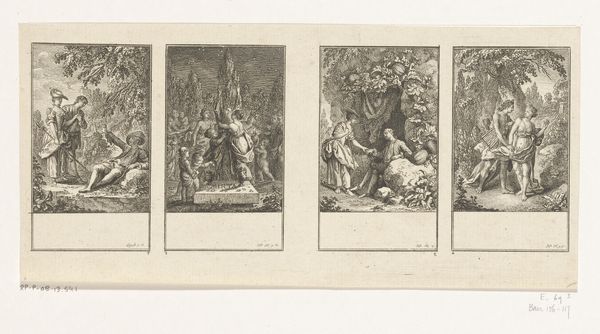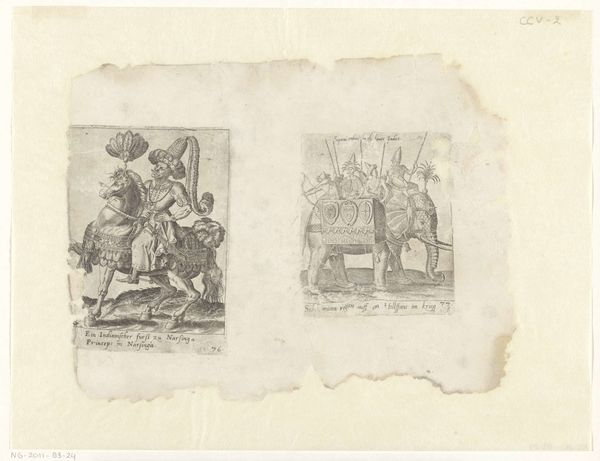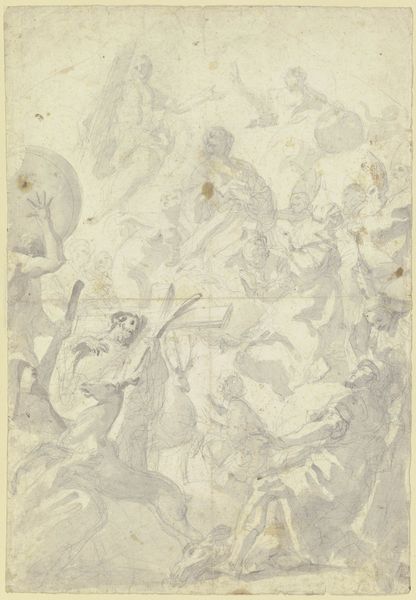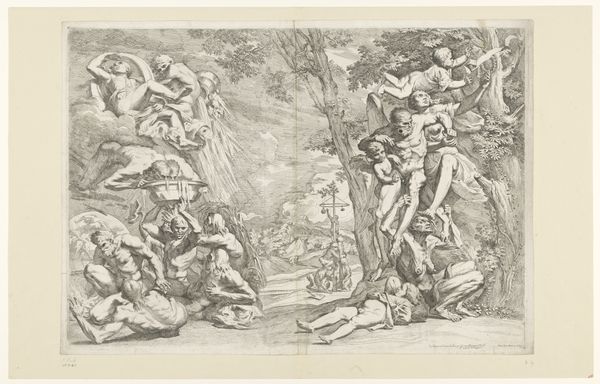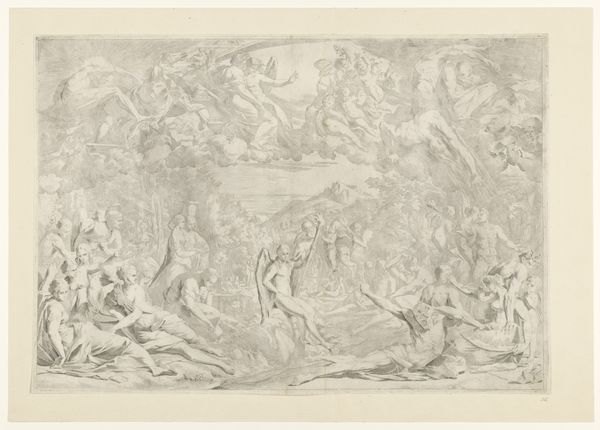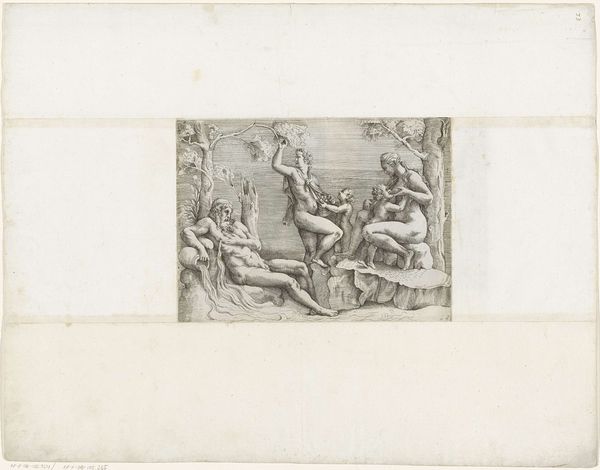
graphic-art, print, engraving
#
graphic-art
# print
#
11_renaissance
#
engraving
Dimensions: height 286 mm, width 394 mm
Copyright: Rijks Museum: Open Domain
Curator: Here we have a Renaissance engraving by Philips Galle, active between 1561 and 1596, titled “Linkeronderhoek van een prent van het tafereel van Cebes.” Part of a larger narrative scene, this piece showcases Galle’s mastery of the engraved line. Editor: It’s evocative, even in its fragmented state! The tears and stains give it an almost archaeological feel. Makes you wonder what journey this particular piece has been on. There's an intensity within this confined space. Curator: Precisely. Observe the artist's effective use of hatching and cross-hatching. Through meticulous tonal gradations, Galle has constructed dynamic figure groupings and varying planes. Consider the narrative complexities embedded in this segment of the broader Cebes tableau. Editor: I'm struck by the figures themselves – there’s a real tension and drama etched into their faces. It feels incredibly immediate, raw even, despite being centuries old. It is not just shapes on a page but emotions trapped. Curator: I concur. Galle’s intention appears to engage philosophical concepts prevalent in Renaissance thought through the rigorous precision of engraving. The classical forms, caught in such expressive attitudes, really exemplify this. Editor: What I find amazing is how a work on paper can suggest such sculptural presence, and, yet, because of the damage it takes on a feeling of lightness, an ethereality... Curator: Indeed, the contingent history of this particular print, evident in its damage, interacts paradoxically with Galle's deliberate compositional strategy. It prompts contemplation about both mortality and enduring artistic skill. Editor: It really sparks a feeling of historical intimacy. I like how something old and falling apart has an unpolished charm to it and triggers the need to dive into that narrative a little deeper. Curator: The intersection of material degradation and representational refinement is what provides “Linkeronderhoek van een prent van het tafereel van Cebes” its captivating tension, a compelling look at printmaking during the Renaissance. Editor: Absolutely, it's a profound glimpse, into a moment in time and a really beautiful piece of survival.
Comments
No comments
Be the first to comment and join the conversation on the ultimate creative platform.
